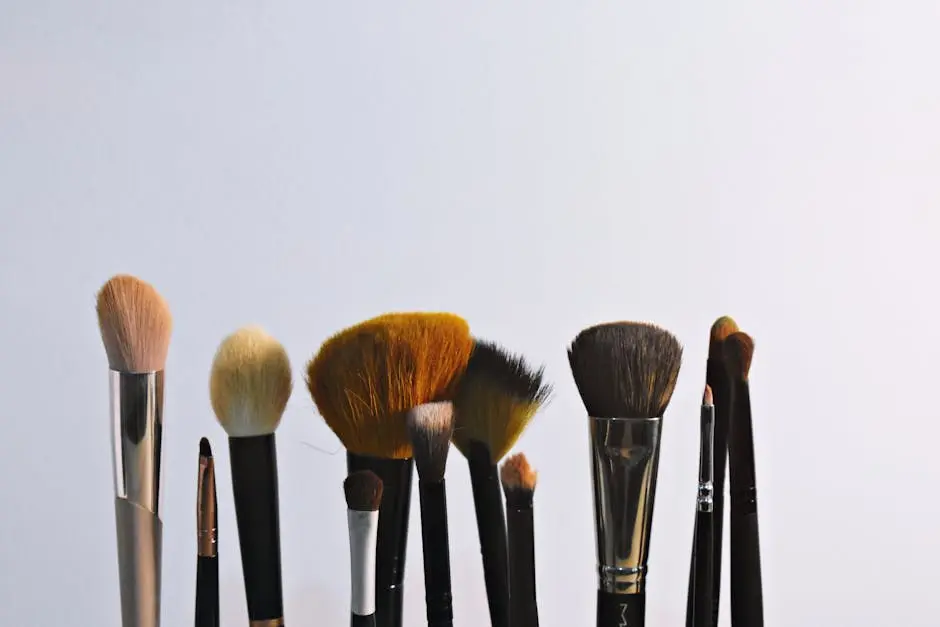
Mastering the Art of Contour Makeup Brushes
Contouring can seem daunting, but with the right tools in hand, it becomes an exciting way to enhance your natural beauty. Among those tools, contour makeup brushes play a crucial role in achieving that flawless look. In this blog post, we’ll dive into the world of contour brushes, exploring how to choose the right ones and the techniques to use them effectively.
Understanding Contour Makeup Brushes
Before we dive into specific brush types, let’s clarify what contour brushes are and why they are essential for creating dimension on your face.
Contour makeup brushes come in various shapes and sizes, each designed for a specific purpose. They serve as your secret weapon, allowing you to sculpt, define, and illuminate your facial features with precision. Understanding how these brushes work will not only enhance your makeup application but also boost your confidence in mastering your contouring skills.
The key to effective contouring lies in the technique you use along with the right tools. With contour brushes, it’s about creating shadows and highlights that mimic the natural lines of your face. This is why it’s crucial to choose brushes that feel comfortable and easy to maneuver. Let’s explore these tools together!
Types of Contour Makeup Brushes
There are various types of contour brushes, each designed for different areas of the face. We’ll explore the differences between angled brushes, flat brushes, and buffer brushes, so you know exactly which ones to choose.
Angled brushes are perfect for precision highlighting along the cheekbones and jawline. Their slanted bristles effortlessly glide over the skin, enabling you to create those sharp, defined lines. In contrast, flat brushes work wonders for larger areas of the face, such as the forehead and nose, allowing for even application of cream or liquid products.
Buffer brushes, on the other hand, are ideal for blending out your contour products seamlessly. They usually have dense bristles that help achieve that soft, airbrushed finish. Whether you prefer bold contours or subtle shadows, understanding these brush types can help tailor your approach to suit your desired look.
Moreover, you might find specialized contour brushes, such as domed or stippling brushes. Each serves a unique function, and investing in a mix of these can truly elevate your contouring game. With the right toolkit, you can master the art of contouring, regardless of your skill level.
Choosing the Right Brush for Your Face Shape
Not all brushes work for every face shape. We’ll discuss how to select the perfect contour brush that complements your unique features.
Understanding your face shape is critical for effective contouring. A heart-shaped face might benefit from a brush that emphasizes the cheekbones while softening the forehead, whereas a round face may require a brush that helps elongate the appearance of the face. By choosing the appropriate contour brush, you ensure that your makeup enhances your natural beauty rather than masking it.
For instance, if you have a square jaw, consider using a softer, rounded brush to blend your contour products along the jawline. This softens the angles and creates a more harmonious look. Conversely, if you have an oval face, you may opt for a narrower brush that allows for more precision in highlighting areas like the center of your forehead and the chin.
Taking the time to assess your face shape and select brushes that complement your contours will make a significant difference in your results. Remember, the right tools can change the game!
Essential Contouring Techniques with Brushes
Now that you have the right brushes, it’s time to learn how to use them! We’ll cover essential techniques for applying contour products, including the best angles and blending methods.
To start, always apply your contour products in light layers and build them up gradually. Using a gentle hand with your brush allows for a more natural look. A common technique is to use the ‘3’ pattern; start from your forehead, move to your cheeks, and finish at your chin. This helps outline the features without overwhelming them.
It’s also crucial to blend, blend, blend! Use larger, soft brushes for areas like the cheeks, while smaller, dense brushes are perfect for pinpointing specific areas such as the sides of the nose. Technique and tools combined will lead to beautiful results.
Finally, don’t forget to step back and evaluate your work in different lights to ensure everything looks harmonious. Mastering these techniques may take practice, but the results will make the effort worthwhile.
Maintaining Your Contour Brushes
Proper maintenance of your brushes is key to achieving the best results. We’ll go over cleaning, storage, and tips to prolong the life of your contour brushes.
Cleaning your contour brushes regularly not only ensures a smooth application every time, but it also helps maintain their shape and prevent the build-up of old product which can lead to breakouts. Aim to clean your brushes at least once a week, using gentle soap or brush cleaners that won’t damage the bristles.
When storing your brushes, consider keeping them upright in a cup or a brush holder. This way, the bristles won’t become misshapen. Additionally, avoid lying them flat, as moisture from the bristles can seep into the ferrule, leading to deterioration over time.
Lastly, inspect your brushes from time to time. If you notice any shedding bristles or signs of wear, it may be time to replace them. Taking these steps will ensure your beauty tools stay in top shape and serve you well for years to come.
Embrace Your Contouring Journey
By incorporating the right contour makeup brushes and techniques into your routine, you’ll unlock a world of possibilities for enhancing your features. Remember, practice makes perfect—so don’t be afraid to experiment and find your unique style. Happy contouring!

